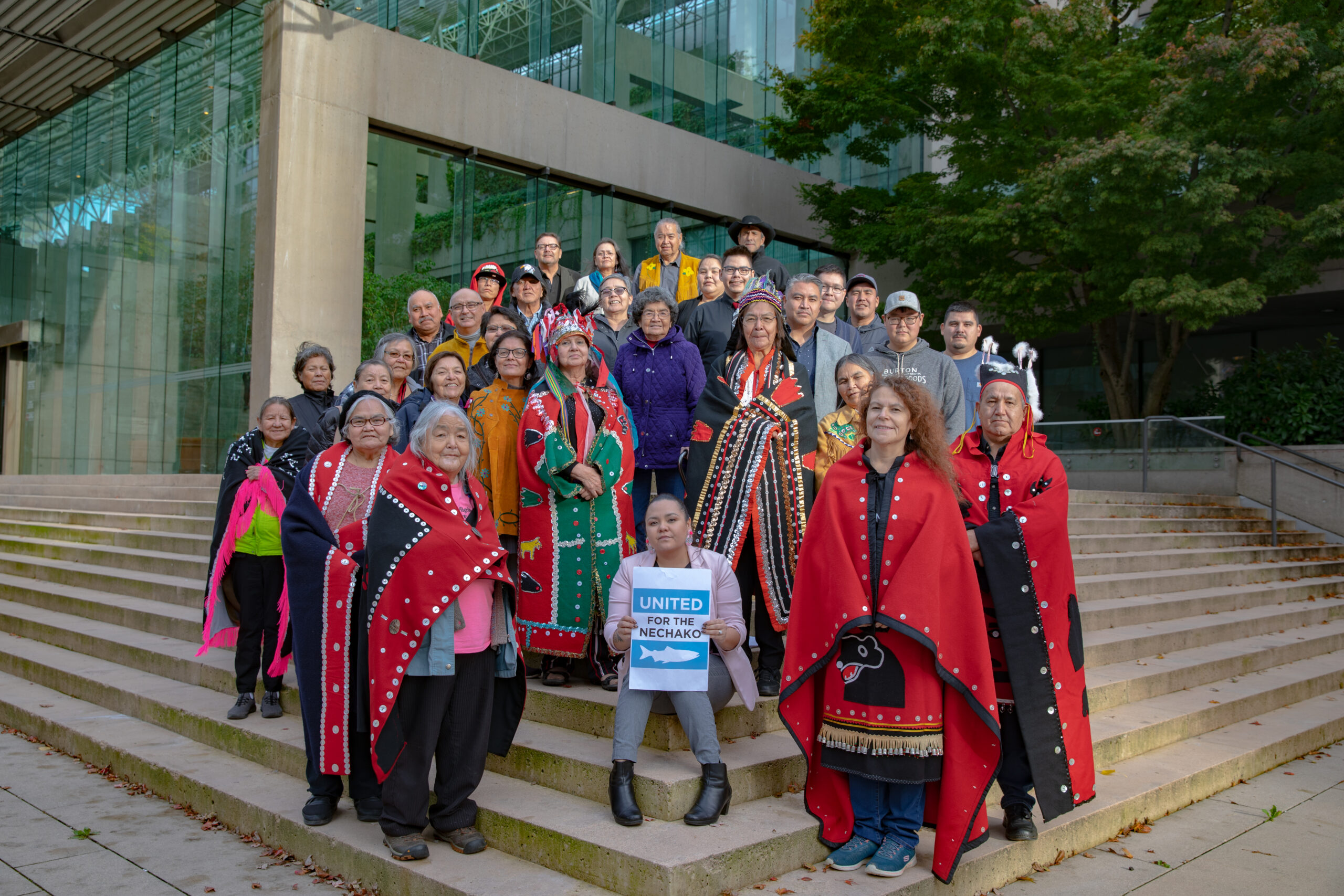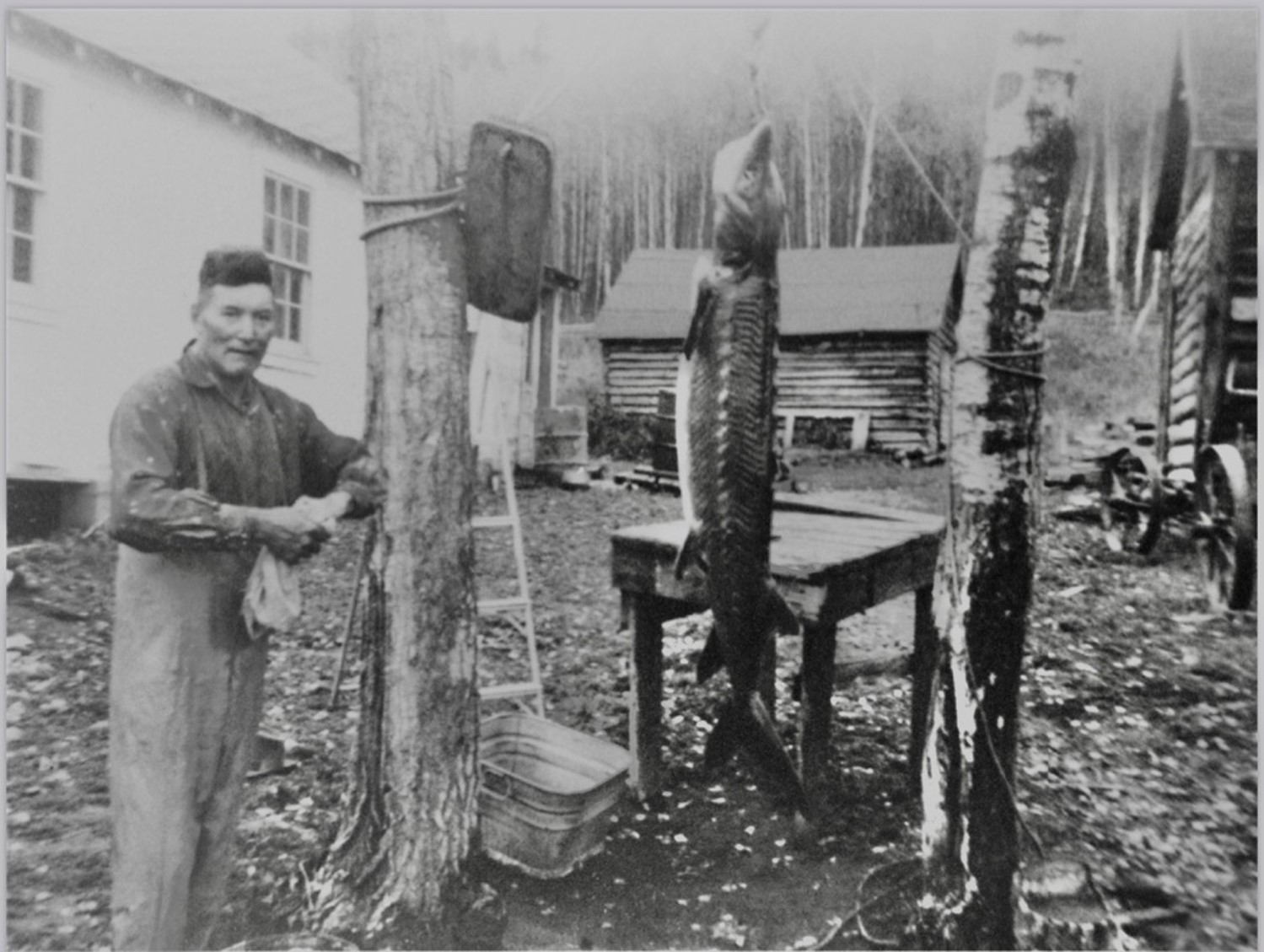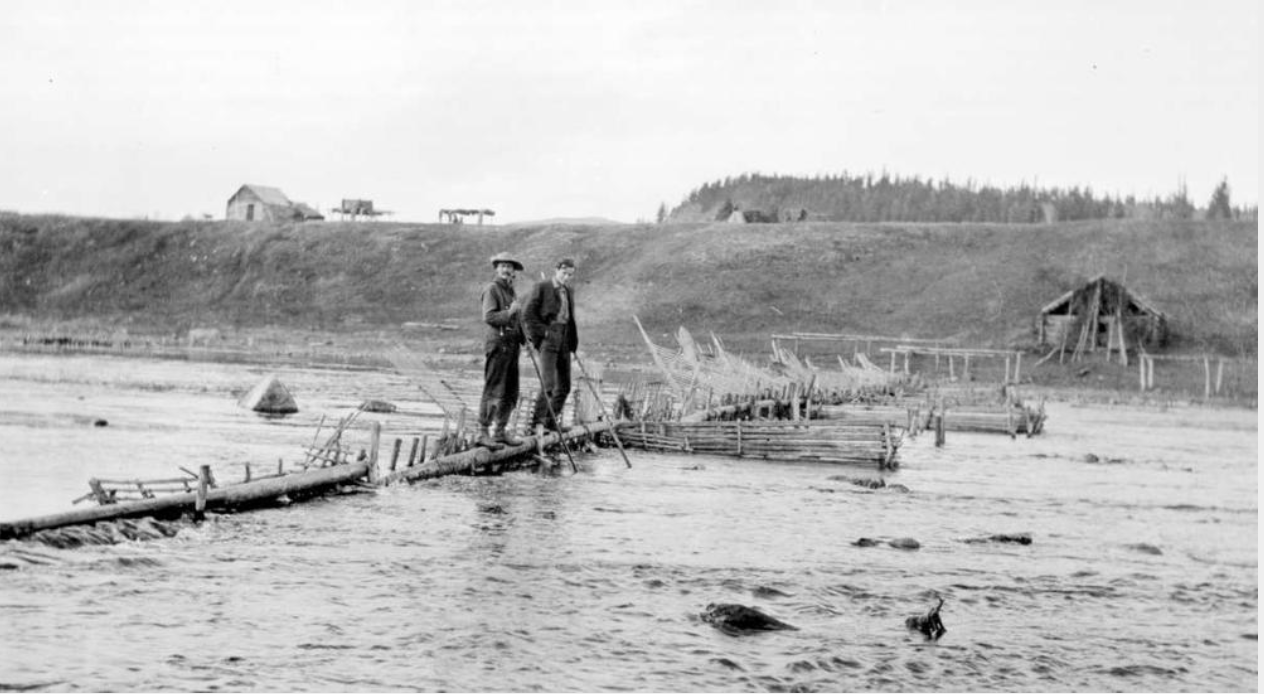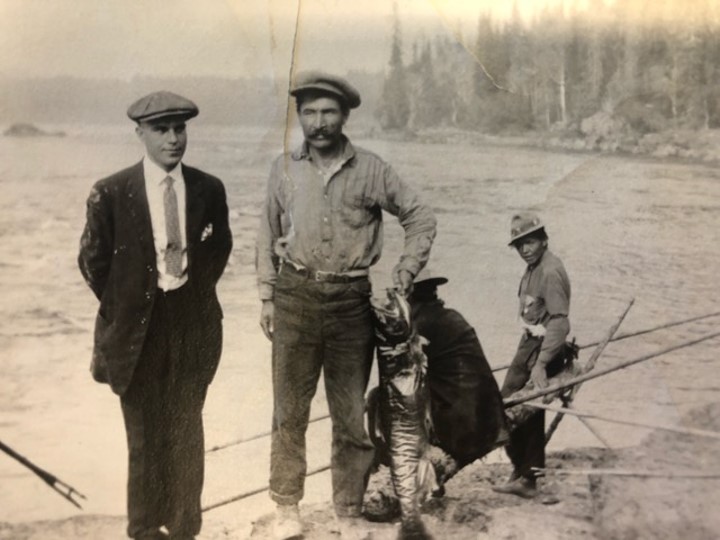
Celebrating 7 years of The Narwhal — and gearing up for the next 7
Between a fresh take on engagement and our new life on video, our team is...
Seventy years ago, B.C. approved a hydroelectric project that would irreversibly alter an entire watershed and forever change the lives of First Nations living along the Nechako River.
The Kenney dam was built in the early 1950s to provide power to an aluminum smelter on the coast, owned by the Aluminum Company of Canada, now Rio Tinto Alcan. The provincial government at the time openly and actively courted the development through an aptly named piece of legislation called, An Act to Promote the Industrial Development of the Province.
Permits were issued, First Nations communities removed, construction completed and 890 square kilometres flooded to create the reservoir, reducing the natural flow of the Nechako River by 60 to 70 per cent.
Decades later, the Saik’uz and Stellat’en First Nations took Rio Tinto Alcan and the province to court. They wanted to force the company to restore some of the river’s flow and salvage what little remains of vital habitat for endangered white sturgeon and struggling salmon populations.
After three years of hearings, their case was dismissed by the B.C. Supreme Court in January — but it paved the way for an appeal process. The judge affirmed the two nations inhabited the land prior to colonization and therefore Saik’uz and Stellat’en members have a fundamental “right to fish the Nechako watershed for food, social and ceremonial purposes.” The court also confirmed the dam and ongoing provincial regulation of water levels continues to have a direct and negative impact on fish populations. Their appeal was filed in late July.
“We’re not going to quit,” former Saik’uz elected chief and current councillor Jackie Thomas told The Narwhal in an interview. She explained how the fish provide both food security and spiritual and cultural connections. “We’ve taken a spiritual blow for 100 years here in B.C. … I will use every means necessary for my community to get what we need.”
Thomas, now a grandmother, is one of the named plaintiffs on the case which first went to trial in 2019.
“Truthfully, I think I’m the third generation on this file,” she said. “Before me, there was my uncle and before him, that was my grandma.”

It’s clear the government has a legal obligation to protect First Nations’ right to fish, Darwin Hanna, founding partner at Callison and Hanna law firm and member of the Nlaka’pamux Nation, told The Narwhal. The challenge, he said, is not so much agreeing the dam has an ongoing impact, it’s getting the government to do something about it.
“How do you provide for restitution and reconciliation for the interference with the fishery, the waterways and interference of Rights and Title?” Hanna said in an interview. “I think it’s going to require some real political shifting of how they approach these cases because really it’s a history of denial, denial, denial.”
While B.C. Supreme Court Justice Nigel P. Kent rejected the nations’ case, he acknowledged the “bleak and intractable” legacy of colonization, which includes B.C.’s approval of the project. The appeal centres on how the court ruling leaves Saik’uz and Stellat’en with no recourse, despite Kent agreeing with the nations on all the facts at hand.
“After 189 days of trial … the [nations] proved that the diversion of waters from the Nechako by Alcan is causing serious decline of the fisheries their Indigenous communities have relied on since time immemorial — to the near extirpation of sturgeon, and, with salmon now a ‘mere shadow of its former abundance’,” the opening statement of the appeal notes. “The identity, culture and way of life of the appellants — the very core of what … the Constitution promises to protect — are bound up and lost in the decline of the fisheries.”



According to the nations’ legal counsel, Justice Kent made a legal error by not requiring the province to order Rio Tinto to put more water back into the river, despite B.C.’s constitutional obligation to protect the nations’ rights. Kent said that if anyone is liable, it’s the Crown, but noted that Rio Tinto is operating under provincial permits so the court couldn’t hold the company responsible for the damage. In the same breath, he said that because the court couldn’t tell the company what to do, it was unable to make a “declaration” ordering the province to amend the permits.
“This reasoning is internally contradictory,” the appeal notes, pointing to the landmark 2021 Blueberry River First Nation decision on Treaty Rights which included a “declaration that the province may not continue to authorize activities that unjustifiably infringe the treaty right or breach the Crown’s duties.”
That kind of declaration, the appeal argues, can also be made for Sai’kuz and Stellat’en.
Hanna said this case could chart a path forward for “all First Nations” that have been similarly impacted by past development, noting the underlying question is how to “decolonize these industrial complexes.”
“This case is precedent setting, and so there’s a lot riding on it,” he said.
Notably, the two neighbouring nations are not asking the courts to destroy the dam or restore the river to its original state. Instead, they hope to come to an arrangement in which Rio Tinto would work with the province to establish a flow regime that helps restore natural ecological functions.
To this end, Saik’uz and Stellat’en asked the courts for an injunction against Rio Tinto to ensure the company regulates the flow of water in a way that does not continue to impact downstream fisheries.
The hydroelectric facility reverses the natural direction of the water, sending it west via a 16 kilometre tunnel through the Coast Mountains to Kemano, where it plunges over a 790 metre precipice to waiting turbines. The Kemano power station produces more electricity than Rio Tinto needs to operate its smelter and the company sells its surplus to BC Hydro.
“Why can’t they just put that difference back down this side of the mountain?” Thomas asked.

Rio Tinto told The Narwhal the Kemano power station has a capacity of 896 megawatts, around 80 per cent of which is used to power the smelter. BC Hydro data on its agreements with independent power producers notes Kemano produces a total of 3,307 gigawatt hours annually, which means it sells around 660,000 megawatt hours to the public utility — roughly the annual amount of energy consumed by around 60,000 households.
Neither BC Hydro nor Rio Tinto would disclose the dollar value of this surplus energy, which the public utility buys through an electricity purchase agreement, established in 2007 and locked in until 2034. According to provincial documents accessed through open information policy, BC Hydro pays the company between $64 and $88 per megawatt hour. A conservative calculation puts the revenue Rio Tinto earns from selling the electricity at upwards of $45 million per year.
For Thomas, it’s not about the money, it’s about the fish.
“Our ecosystem has value, our people have value. It’s not always about dollars and cents,” she said. “We’re not wealthy, we’re not well-off people. And we still depend on this hunting and fishing and gathering — that’s what supplements us financially.”
Saik’uz average income is less than half the provincial average, according to 2016 census data. Thomas said the community had to fundraise through the likes of bottle drives and bake sales to cover travel expenses for members who wanted to attend the court hearings.
There is an urgent need to “start doing some remediation work now, before we actually extirpate the last three of the six fish stocks that we have left,” she explained.
“Basically, that’s what it is: trying to save our fish.”
In a statement provided to The Narwhal, Rio Tinto noted it contributed $13 million to white sturgeon conservation, through a recovery initiative bringing together federal and provincial biologists, First Nations, industry experts, local and municipal governments and more. The company also said it committed $50 million to a fund set up in the late 1990s as part of an agreement between Rio Tinto and the province.
“Improving the health of the Nechako River is a goal we all share and we are actively engaged with First Nations communities on this priority,” a Rio Tinto spokesperson wrote in an emailed statement. “We will continue to collaborate with First Nations, governments and other stakeholders to review all aspects of the Nechako Reservoir management process.”
But Thomas said support from the company has never come easy.
“They have not willingly done the right thing — they’ve always had to be forced,” she said. “This company’s really good at dividing and conquering. That’s why we can’t get this water over the line, getting more water for our river and our sturgeon, our salmon. Those are the two main ones right now but the whole ecosystem is needing rehabilitation.”
“We understand it’s not going to be the same river because it’s been through 70 years of friggin’ change,” she added.
Get the inside scoop on The Narwhal’s environment and climate reporting by signing up for our free newsletter. On a warm September evening nearly 15...
Continue reading
Between a fresh take on engagement and our new life on video, our team is...

The public has a few days left to comment on Doug Ford’s omnibus development bill....

115 billion litres, 70 years to fix, $5.5 billion in lawsuits
